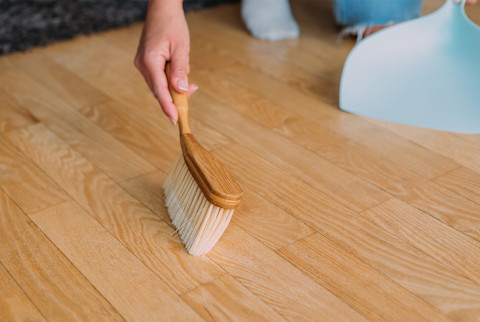4 Irritants Hidden In Household Dust + How To Reduce Your Exposure

Here are a few of the most common chemicals found in dust and how to avoid them by dusting your high-traffic areas just a bit more:
Phthalates
Found in: Vinyl flooring, vinyl shower curtains/shower curtain liners, and soft rubber toys; hides in fragrances (in personal care/beauty and cleaning products, etc.).
Health concerns: Early research1 has linked phthalates to developmental issues, hormone disruption, reproduction, and fertility issues. Children born to mothers who had high phthalate levels also had lower IQs.
Flame retardants
Found in: Furniture with polyurethane foam, electronics, some brands of high chairs, mattresses, car seats, and some children's pajamas.
Health concerns: Linked to reproductive, fertility, and nervous system issues; obesity; hormone disruption; thyroid issues; and behavior and attention issues in children.
Fluorinated chemicals
Found in: Nonstick cookware, stain- and water-resistant clothing and furniture, the lining of fast-food wrappers, and the lining of microwave popcorn bags.
Health concerns: Linked to immune system problems2, developmental issues, low birth rates, and challenges with pregnancy.
Lead
Found in: Paint (in homes built before 1978), cosmetics, art supplies, air, water, soil, and certain careers and industry (lead can be brought into the home from those exposed at work).
Health concerns: Neurological effects and lower IQ3. Although lead exposure over time can affect adults, kids are more susceptible to lead exposure.
7 ways to lower your exposure to dust.
Once you've implemented a tiny bit of extra dusting, there are some other practical ways you can reduce the dust buildup in your home. Add one tip at a time until these changes become habits:
- Don't stress about dusting every room every day. Concentrate on places where your family spends the most time, such as bedrooms and floors/play areas where your children hang out.
- Take your shoes off before entering your home. You'd be surprised what comes in on shoes! We not only bring dirt inside on our shoes but dust, too.
- Damp-mop rather than sweep. Sweeping just moves the dust around. Dusting and mopping with a damp towel are effective because the moisture will lift up the dust rather than pushing it around.
- Damp dust rather than dry dusting with a Swiffer or feather duster; this also moves dust around. Dust with a safe dusting spray or use a DIY dusting spray (using toxic chemicals just adds to the problem).
- Vacuum frequently, and use a vacuum with a HEPA filter.
- Wash hands with soap and water frequently, especially before eating.
- Buy safer products as often as possible to cut down on overall toxins in your home.
Adapted from an excerpt from The Slightly Greener Method: Detoxifying Your Home Is Easier, Faster, and Less Expensive Than You Think by Tonya Harris, M.S., with permission from the publisher.
